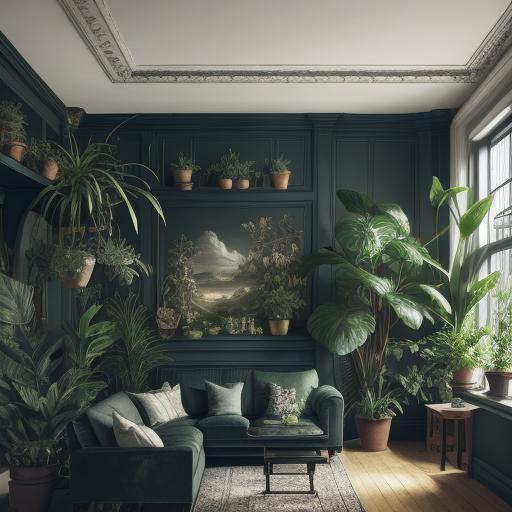In recent years, the trend of decorating with houseplants has surged in popularity. More and more people are turning to greenery to enhance their indoor spaces. Not only do houseplants add a touch of natural beauty, but they also offer numerous health benefits, such as improved air quality. If you’re looking to join this green movement, here’s how you can select easy-care plants and incorporate them into your home décor seamlessly.
Attention: The Growing Popularity of Houseplants
Houseplants have become a staple in modern home décor. Whether you live in a cozy apartment or a spacious house, adding plants to your living spaces can transform the ambiance. This trend isn’t just about aesthetics; it’s about creating a healthier and more vibrant environment.
Interest: The Benefits of Houseplants in Your Home
Houseplants do more than just look good. They have been proven to:
- Improve Air Quality: Plants like Sansevieria, Monstera, and Philodendron can filter harmful toxins from the air.
- Boost Mood and Productivity: Having greenery around can reduce stress and increase overall well-being.
- Enhance Aesthetics: With a variety of shapes, sizes, and colors, plants can complement any interior design style.
Desire: Choosing Easy-Care Plants
For those new to plant care, it’s essential to start with easy-care varieties. Here are three popular choices:
- Sansevieria (Snake Plant): Known for its striking, upright leaves, the Sansevieria is incredibly resilient. It thrives in low light and requires minimal watering.
- Monstera (Swiss Cheese Plant): With its large, unique leaves, the Monstera adds a tropical vibe to any room. It prefers bright, indirect light and moderate watering.
- Philodendron: This versatile plant comes in many varieties, each with lush foliage that can adapt to various light conditions. Philodendrons are forgiving and easy to maintain.
Action: Incorporating Houseplants into Your Décor
Now that you know which plants to choose, here are some tips on incorporating them into your home:
- Living Room: Place a large Monstera in a stylish pot to create a focal point. Add smaller plants like succulents on shelves or coffee tables.
- Bedroom: Use Sansevieria for bedside tables. Their air-purifying qualities can enhance your sleep environment.
- Kitchen: Hang Philodendron plants in decorative pots to utilize vertical space and add greenery to your cooking area.
- Bathroom: Opt for moisture-loving plants like ferns or spider plants to create a spa-like atmosphere.
FAQs
Q: How often should I water my houseplants? A: It varies by plant type, but most houseplants prefer the soil to dry out between waterings. Overwatering is a common mistake, so it’s better to err on the side of too little water than too much.
Q: What are some low-light houseplants? A: Sansevieria, ZZ Plant, and Pothos are excellent choices for low-light conditions.
Q: Can houseplants really improve air quality? A: Yes, many houseplants can remove toxins like formaldehyde and benzene from the air, contributing to a healthier indoor environment.
Q: How do I know if my plant is getting enough light? A: Signs of inadequate light include slow growth, pale leaves, and dropping leaves. If you notice these signs, try moving your plant to a brighter location.
Q: What should I do if my plant’s leaves turn yellow? A: Yellow leaves can indicate overwatering, underwatering, or insufficient light. Check your plant’s care requirements and adjust accordingly.
Embrace the trend of decorating with houseplants to create a vibrant, healthy living space that you’ll love. By choosing easy-care varieties like Sansevieria, Monstera, and Philodendron, you can enjoy the beauty and benefits of indoor plants without the stress of high maintenance. Happy planting!

